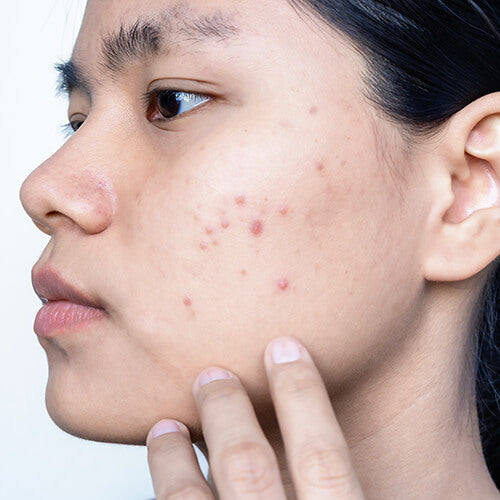Pimples Treatment in Dubai, or acne, can affect individuals differently depending on their skin type. The key to effective treatment lies in understanding your specific skin type and choosing the appropriate products and methods that target your unique needs. Whether you have oily, dry, combination, or sensitive skin, finding the right pimple treatment can make all the difference in achieving clear and healthy skin.
Understanding Your Skin Type
Before selecting a treatment, it’s essential to determine your skin type. The main skin types include:
1. Oily Skin
Oily skin is characterized by excess sebum (oil) production, leading to shiny skin and clogged pores, which can result in pimples. Individuals with oily skin are prone to blackheads, whiteheads, and pustules.
2. Dry Skin
Dry skin lacks moisture and tends to feel tight, flaky, and rough. Despite being less prone to pimples than oily skin, dry skin can still experience breakouts, often due to irritation or dehydration.
3. Combination Skin
Combination skin exhibits characteristics of both oily and dry skin, with oilier areas typically on the forehead, nose, and chin (the T-zone) and drier patches on the cheeks and other areas.
4. Sensitive Skin
Sensitive skin is easily irritated and can react to many skincare products, resulting in redness, inflammation, and breakouts. It requires gentle care and soothing ingredients to manage pimples.

Pimple Treatments Based on Skin Type
1. Oily Skin: Focus on Oil Control
For oily skin, the goal is to control excess oil production while preventing clogged pores. The best treatments for oily skin include:
- Salicylic Acid: A beta-hydroxy acid (BHA) that exfoliates the skin and penetrates pores to dissolve oil and debris, making it ideal for treating blackheads and whiteheads.
- Benzoyl Peroxide: This ingredient kills acne-causing bacteria and helps reduce inflammation. It works well for treating moderate to severe pimples but can be drying, so use with caution.
- Clay Masks: Clay masks help absorb excess oil and impurities, making them a great addition to an oily skin routine.
- Oil-Free Moisturizers: Even oily skin needs hydration. Look for lightweight, oil-free, non-comedogenic moisturizers to maintain skin balance.
2. Dry Skin: Hydrate and Protect
Dry skin can be prone to irritation, which may lead to breakouts. Choosing gentle, hydrating treatments is crucial for maintaining moisture while treating pimples:
- Hyaluronic Acid: A hydrating ingredient that attracts moisture to the skin without clogging pores. It helps combat dryness without aggravating acne.
- Gentle Cleansers: Opt for non-foaming, hydrating cleansers that cleanse without stripping the skin of its natural oils.
- Niacinamide: This anti-inflammatory ingredient helps soothe the skin, reduce redness, and balance oil production, making it suitable for dry and acne-prone skin.
- Avoid Harsh Exfoliants: Steer clear of harsh scrubs and exfoliants that can irritate and further dry out the skin.
3. Combination Skin: Balance Oil and Moisture
Combination skin needs targeted treatment to address both oily and dry areas:
- Spot Treatments: Use salicylic acid or benzoyl peroxide on the oilier parts of your face (typically the T-zone) to treat pimples directly, while avoiding the drier areas.
- Gel-Based Moisturizers: A lightweight, gel-based moisturizer can hydrate the drier parts of your face without adding extra oil to the oily areas.
- Exfoliate Gently: Use mild exfoliants to address clogged pores in the T-zone, but ensure the product doesn’t irritate or dry out the cheeks and other dry areas.
4. Sensitive Skin: Go Gentle
Sensitive skin requires extra care to avoid inflammation and irritation, which can worsen pimples:
- Sulfur: This natural ingredient is gentle on sensitive skin while helping reduce inflammation and unclog pores.
- Aloe Vera and Chamomile: Both of these soothing ingredients are ideal for calming sensitive skin while treating breakouts.
- Fragrance-Free Products: Avoid skincare products that contain fragrances, alcohol, or other potential irritants. Look for “hypoallergenic” and “fragrance-free” labels.
- Patch Testing: Always patch-test new products on a small area of your skin before using them all over your face to ensure they won’t cause irritation.
General Tips for Choosing Pimples Treatment
- Consult a Dermatologist: If you’re unsure about your skin type or experiencing persistent or severe acne, consult a dermatologist who can guide you in choosing the right treatment.
- Start Slowly: When trying new treatments, start slowly, especially if the product contains active ingredients like salicylic acid or benzoyl peroxide. Begin by applying the product every other day to monitor how your skin reacts.
- Hydration Is Key: No matter your skin type, keeping your skin hydrated is essential. Hydrated skin is less likely to overproduce oil or become irritated, both of which can worsen acne.
- Consistency Is Crucial: Consistent use of acne treatments, combined with a proper skincare routine, will yield the best results over time.
Conclusion
Choosing the right pimple treatment for your skin type is a vital step in achieving clear skin. By understanding your skin’s needs and selecting products with targeted ingredients, you can treat pimples effectively without causing further irritation or imbalance. Whether you have oily, dry, combination, or sensitive skin, there are treatments available to help you manage breakouts and maintain healthy, glowing skin.





Comments